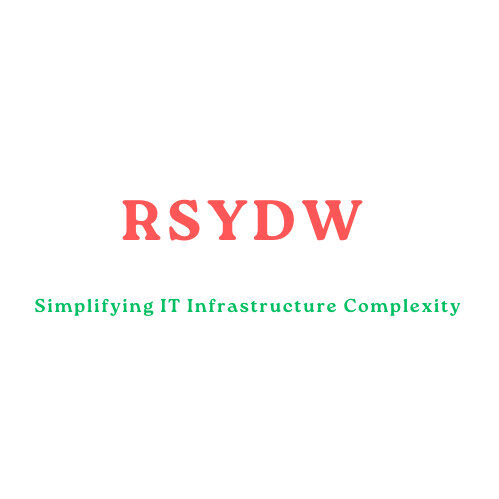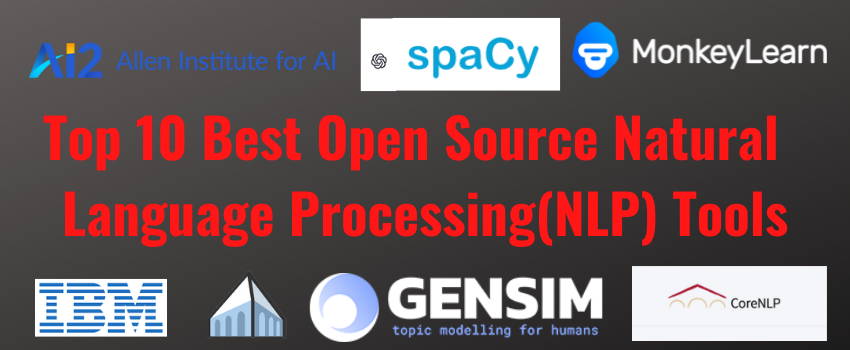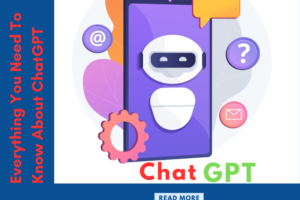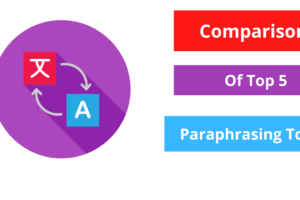|
Getting your Trinity Audio player ready... |
Table of Contents
TOP 10 BEST OPEN SOURCE NATURAL LANGUAGE PROCESSING (NLP) TOOLS
Natural Language Processing (NLP) is the fastest-growing branch of Artificial Intelligence, combining linguistics and computer science to make human language comprehensible to robots.
Every year, fresh developments are made. New NLP tools are being created, and older ones are being upgraded with more advanced capabilities.
Before we go into the top 10 best open source nlp tools, it is crucial to note that all of the tools have either just been published or have been enhanced with new capabilities.
Top 10 Best Open Source NLP Tools
The list of the top 10 best open source nlp tools is as below. Let us explore them one by one briefly. Once you start using any one of them you will get used to it.
I. IBM Watson
IBM Watson is a collection of artificial intelligence (AI) services housed on the IBM Cloud. IBM Watson Natural Language Processing is one of its major capabilities, allowing you to detect and extract keywords, categories, emotions, entities, and more. It may be tailored to many sectors, ranging from banking to healthcare. It contains a library of papers that can help you get started.
II. CoreNLP
It is a powerful and quick annotator for discretionary texts that is widely used in production. It is largely Java-based, however, the tool’s authors released a Python version with the same functionality.
It is simple to access annotation-related functions, and it saves documents and phrases as objects (Intuitive Syntax). It can take raw human language text as input and generate the base structures of words, parts of speech, names of corporations, individuals, and so on, as well as decode dates, times, and numeric amounts.
CoreNLP also specifies the noun phrases that relate to the same things and marks up the structure of sentences in terms of phrases or word dependencies.
III. SpaCy
SpaCy tool is the replacement for NLTK. It includes pre-trained statistical models as well as word vectors. It is a Python and Cython-compatible library. It enables tokenization for more than 49 languages.
It allows you to divide the text into semantic parts such as articles, words, and punctuation. It may be used to recognize dependencies in phrases using named entity recognition (NER) using pre-trained classes. It delivers the most accurate and quickest syntactic analysis of any NLP package.
IV. AllenNLP
AllenNLP is a sophisticated prototype tool with text processing features. When compared to SpaCy, this tool is less successful in manufacturing, but it is widely utilized in research.
It also includes PyTorch, a prominent deep learning framework that allows for more flexible model customization than SpaCy.
It automates some of the activities required by nearly every deep learning model. It includes several modules, such as Seq2VecEncoder and Seq2SeqEncoder.
V. NLTK Toolkit
NTLK Natural Language Toolkit, one of the most popular NLP tools, offers a complete set of programs and modules for statistical and symbolic analysis in Python.
This tool assists in the splitting of a large piece of text into smaller sections (tokenization). This tool may be used to recognize named objects as well as tag some text. It is the most often used NLP tool and is very simple to use.
VI. GPT-3
GPT-3 is a new tool from Open AI that was recently launched. It is currently extremely popular. It is an autocomplete application that is mostly used for text prediction.
The main benefit of utilizing this program is the enormous volume of data on which it was pre-trained (175 billion parameters). GPT-3 can produce results that are more like natural human language.
VII. Berkeley Neural Parser
In BNP, Python also makes use of this tool. It is a high-accuracy parser with 11 language models. It deconstructs sentence syntactic structure into nested sub phrases.
This tool makes it simple to extract information from syntactic constructions. To begin using the tool, you only need a little bit of knowledge and effort.
VIII. MonkeyLearn
MonkeyLearn is a simple NLP tool that aids in the extraction of important insights from text data. The program allows for text analysis such as sentiment analysis, subject categorization, and keyword extraction, among other things.
The tool is used to train text analysis models to provide reliable insights, and once completed, the models may be simply connected to your favorite programs such as Excel. Google Sheets may be accessed using MonkeyLearn’s APIs, which are available in all major programming languages.
IX. TextBlob
TextBlob utility was created using NLTK. It is the greatest choice for the probationer to learn the complexity of NLP and create prototypes for their projects. Sentiment analysis, tokenization, translation, phrase extraction, part-of-speech tagging, lemmatization, classification, spelling correction, and more features are available.
X. GenSim
GenSim is a service is intended for the extraction of information and the processing of natural language. It contains a large number of methods that can be used regardless of the amount of linguistic data collection. Because it relies on NumPy and SciPy (Python tools for scientific computing), the user must first install these two packages before installing GenSim.
The program is exceptionally well-structured, with excellent memory efficiency and processing speed. It allows you to work with big text files without having to load the entire file into memory. Because Gensim uses unsupervised models, it does not need expensive annotations or manual labeling of texts.
Conclusion
That`s it about our top 10 best open source nlp tools list. Thanks for going through this post. Please share and subscribe in your social circle to allow this post to reach the maximum intended audience.
Which One Out of 10 you are using?. Which one do you find best for beginners?. Please share your feedback in the comments.





Comments
Pingback: TOP 10 BEST OPEN SOURCE NATURAL LANGUAGE PROCESSING (NLP) TOOLS | Latest Breaking News | Trending News
Pingback: Everything You Need to Know About ChatGPT – nixdrafts